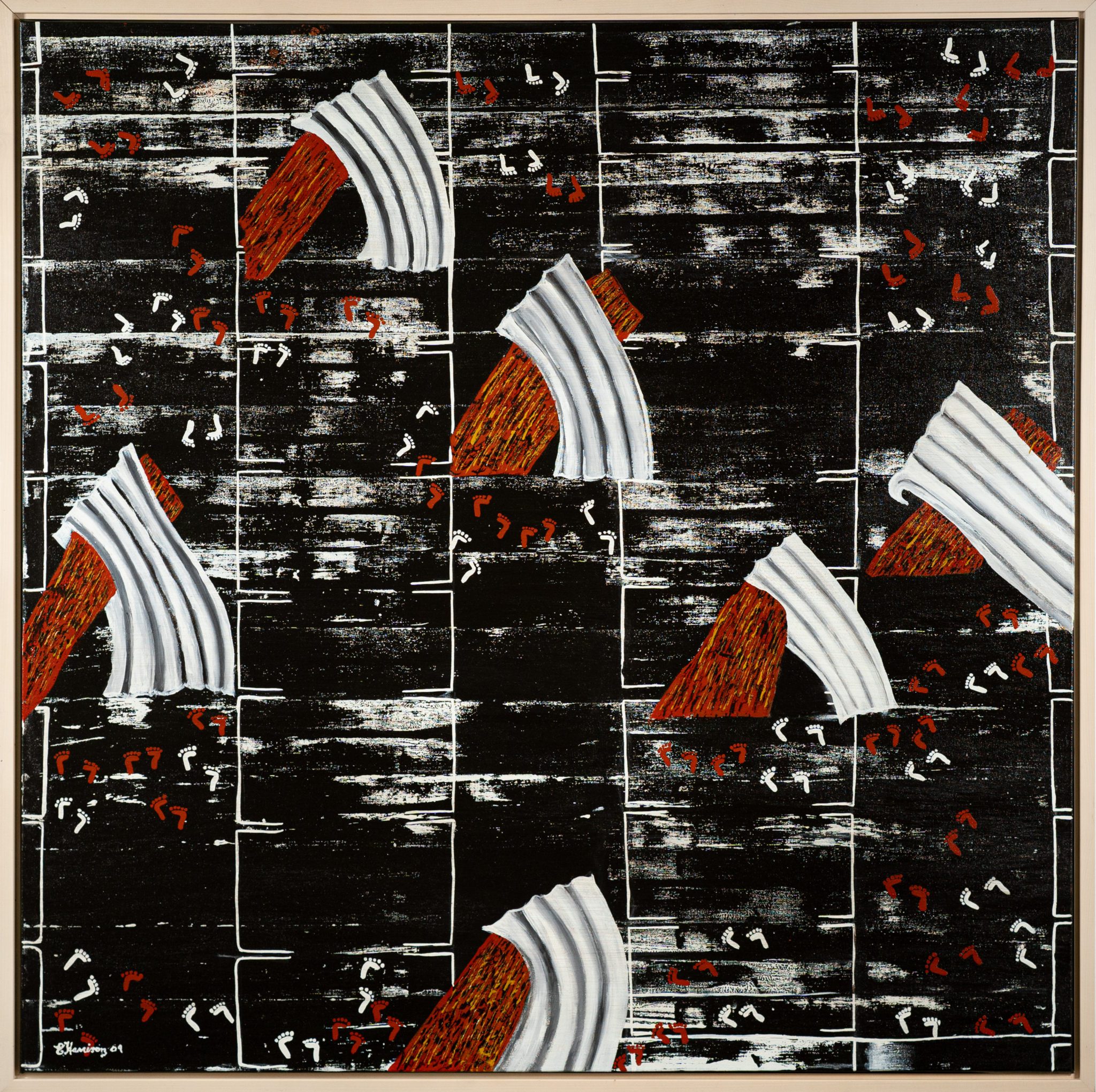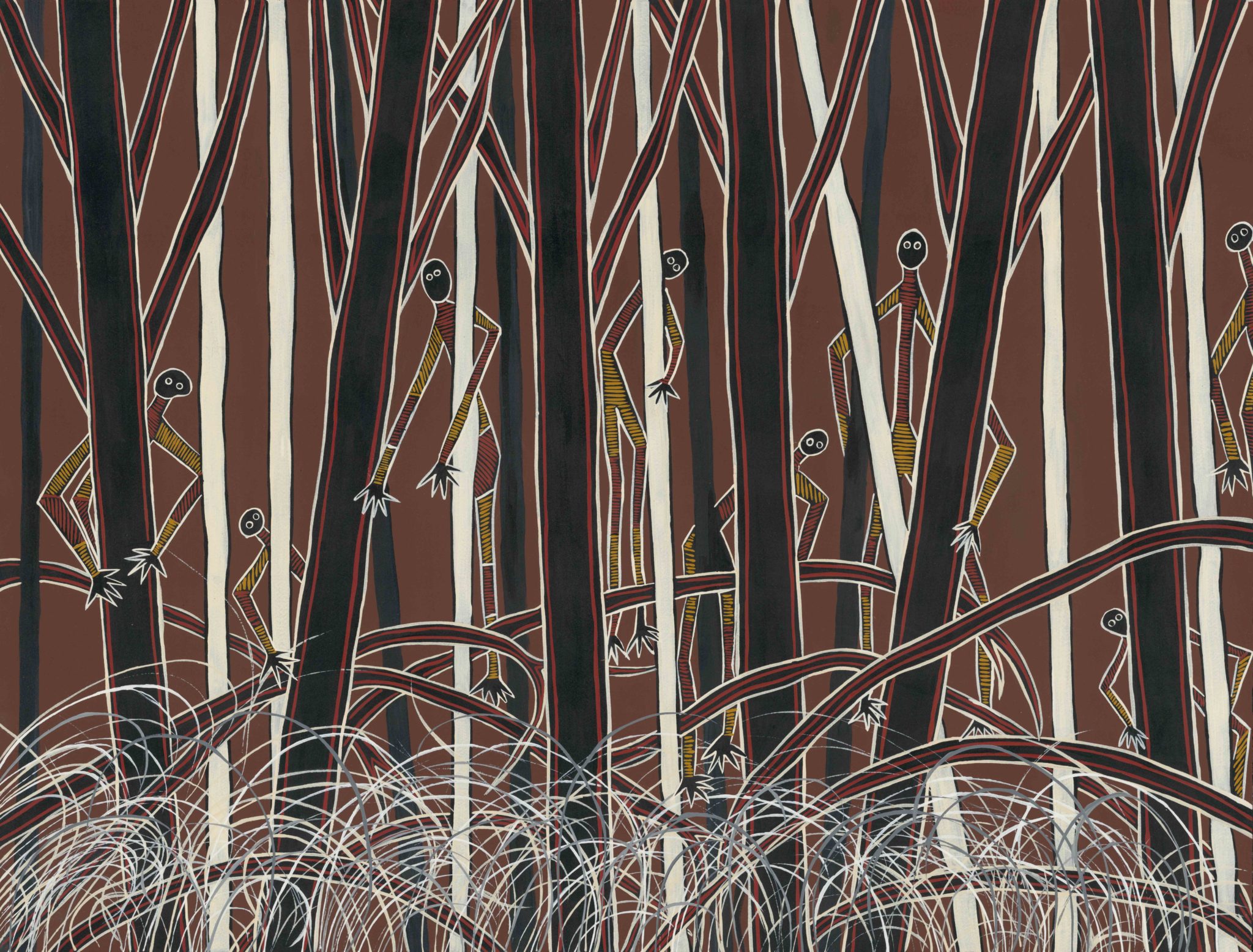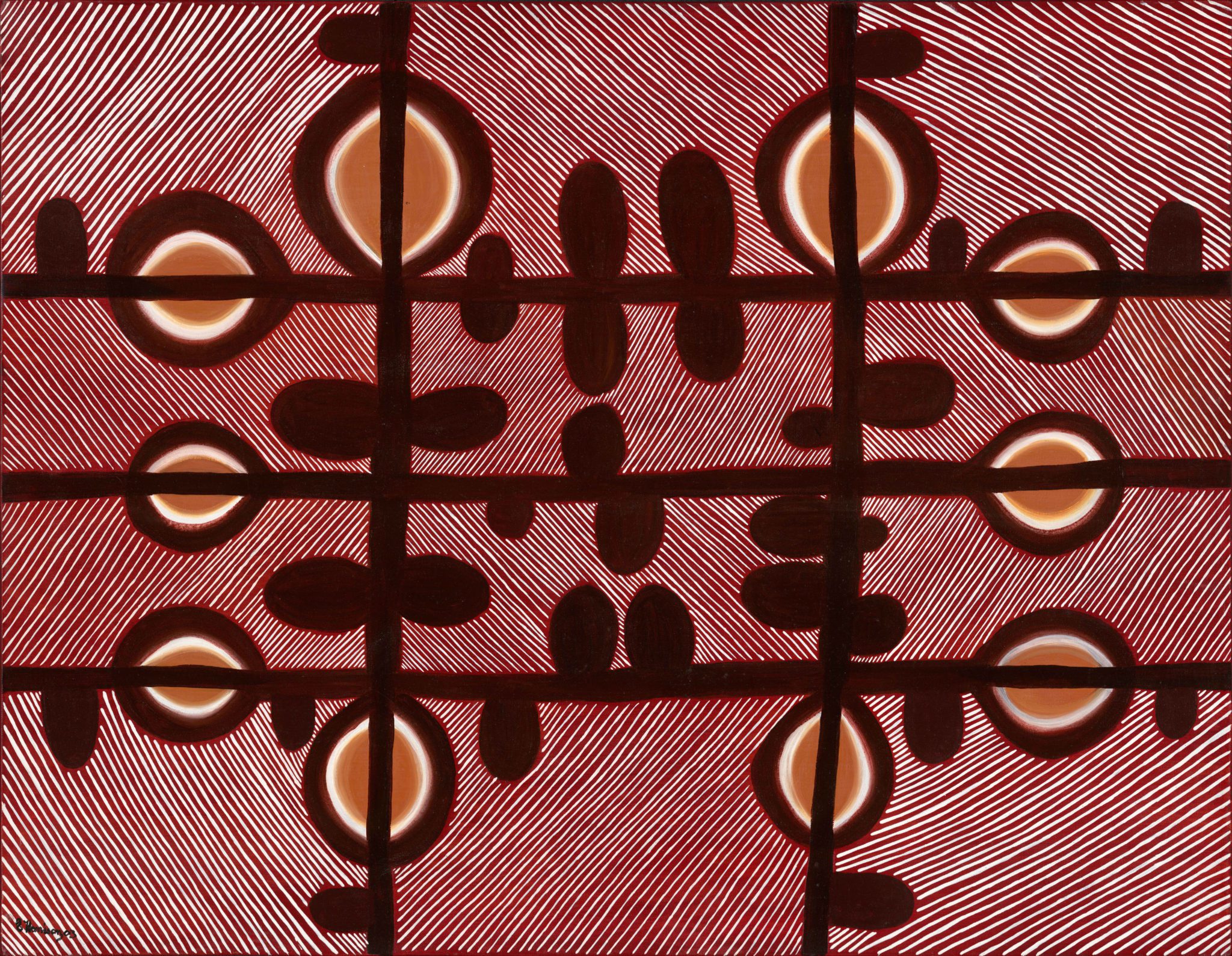Dr Aunty Eileen HARRISON
1. Bulldozing the houses on Jackson’s Track, 2010, Acrylic on canvas, 100 x 99 cm, Latrobe Regional Gallery Collection, purchased 2011.
2. Den of Nargun – Spirit Tracks, 2004, Acrylic on paper, 85 x 102 cm inc. frame, Latrobe Regional Gallery Collection, purchased 2005.
3. Possum Stitch, 2003, Acrylic on canvas, 76 x 100 cm, Latrobe Regional Gallery Collection, purchased 2005.
Dr Aunty Eileen HARRISON
Gunaikurnai artist and Elder; Dr Aunty Eileen Harrison bears a deep spiritual connection to Country. Harrison bases her work on the cultural and ceremonial stories of the Gunaikurnai people of Gippsland. In listening to the land, the trees and messages through birds and other animals, her process involves a profoundly personal encounter with the spirits of her ancestors and the presence of her mother and grandmother.
The Den of Nargun is in the Mitchell River National Park, and the history of this place bears significance to the Gunaikurnai people. In
Gunai Kurnai legend, the Nargun was a creature half-stone and half-human, living in the Dreamtime in a cave behind a waterfall along Woolshed Creek. Stories shared about this creature describe it as fierce and beastly, abducting unvigilant travellers and children who wandered close by. In addition, the Den of Nargun was a spiritual place because it was used as a women’s initiation ceremony place, and the legends told played an important role in keeping others away.
In the work Den of Nargun – Spirit Tracks, Harrison depicts figures that appear one with the environment in which they dwell. These figures represent the spirits of her ancestors, looking over the land and all that lives and passes through Den of Nargun, a sacred landscape. This painting reflects Harrison’s feeling of the spirits’ presence while walking through the cave and invites others to consider the cultural importance of this land.
Born and raised on the Lake Tyers Church Mission, Harrison and her community fled the Mission on the Gippsland Lakes when she was 13, making homes for themselves in Jacksons Track. In Bulldozing the houses on Jackson’s Track, Harrison depicts the oppressive and painful memory of the bulldozing of their makeshift homes. The white lines in the painting represent the bulldozer tracks, and footprints of people who lived in Jacksons Track are scattered across the landscape, portraying the sense of displacement of the community.


